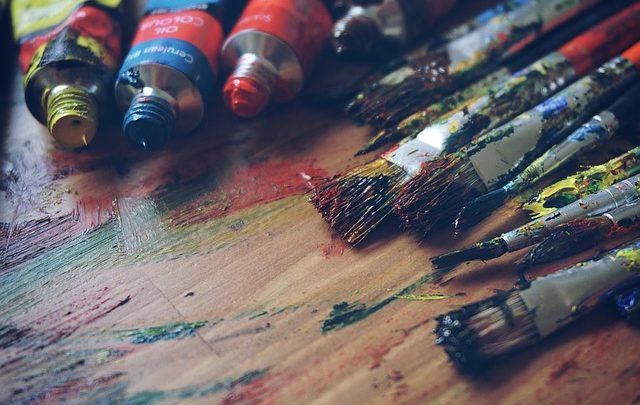Technology
Blockchain and Art – More Power to Art Creators

Blockchain could enable fractionalized art ownership, reduce the need for third-party intermediaries, protect intellectual property rights and help combat counterfeit.
“The Art of Blockchains” was the name of a conference held in Miami Beach earlier this month.
It brought together art collectors, gallerists and developers, discussing how blockchain technology could be used to buy art cooperatively.
Art collector and entrepreneur Adam Lindemann, the organizer of the event, said, “I like change, I’m a contrarian, so if blockchain could change the art world, I want to be a part of that.”
Fractionalized asset ownership
For Lindemann, art is first of all an asset class.
Tokenization and fractionalized ownership of artworks could make investments in art more accessible, and more widely available to investors.
It could provide ways to increase liquidity in the market and reduce transaction costs.
So far, mostly digital art has been traded via blockchain platforms, for examples crypto-collectibles such as CryptoPunks or CryptoKitties.
But physical art has also been sold on blockchain platforms. A famous example was the sale of Andy Warhol’s painting “14 Small Electric Chairs” earlier this year.
31.5% of the work was sold in cryptocurrencies via the blockchain platform Maecenas. The total value of the cryptocurrency share of the painting was $5.6 million. Meacenas told The Times this was “the first artwork of many more to come.”
Imagine you could boast at a dinner party what stake of Warhol’s work you own. Wouldn’t that be cool?
But not everybody at the conference is happy about the idea of fractionalizing art ownership.
“Is it really good for an artwork when all of a sudden there are 2,000 people involved? I’m leaning towards no,” says Nanne Dekking, CEO and Founder of Artory.
Protecting Intellectual property rights
Artory is a blockchain-based registry that tracks provenance for art and collectibles. Thus, it provides another major use case of blockchain technology in the art industry: guaranteeing the authenticity of artworks.
Nanne Dekking explains, “Provenance and authenticity are the main determinants of any artwork’s value. Currently, it has been impossible to have complete confidence about these aspects for many artworks.”
Artory uses blockchain technology to vet, memorialize and protect transaction data. By tracking the history and provenance of artwork, the Artory registry increases buyer and seller confidence.
Using a blockchain-based art registry can ensure total safety of information and make records more trustworthy. Such a registry could include all sorts of artistic work – paintings, sculptures, music, graphic design, writings – and can be used to protect artists’ intellectual property rights.
As the internet has made downloading any artwork easy, piracy has become a huge problem for art creators.
However, working with third-party intermediaries who can protect artists’ IP rights and act as the authorized seller of the work can be painful. Such intermediaries often take the lion’s share of the profits. As a result, artists are often left between a rock and a hard place.
Now, if this process could be managed via blockchain-based smart contracts, artists could take care of their sales themselves and dictate the terms for their work directly with their customers.
Combating counterfeit
A distributed ledger can record details of the place and time of creation, manufacturing processes and how raw material was sourced. This information can help fighting counterfeit.
VeChain Thor and Waltonchain have launched platforms that tag products with an RFID tag. They can verify if products are genuine or not. As all information is stored on a blockchain, it’s impossible to alter the data or the product’s label.
On the one hand, blockchain can benefit the art industry in many ways, and especially the artists themselves. On the other hand, traditional auction houses which provide third-party clearing and secondary trading could be the loser of increased blockchain use.
But with the changes brought by time, industries and companies are faced with the challenge of adapting their business models to keep up with innovation.
Related article:
Decentralized and Encryption Startups Could Save the Internet




Muchos Gracias for your article post.Really thank you! Awesome.